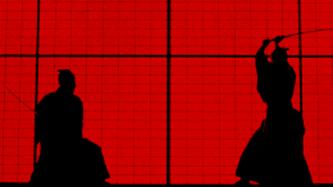|
Page 21
Basic sword etiquette
This relate specifically to the katana

The sword should never be waved around in a threatening manner at anytime except when doing specific exercises. This includes the Bokken (wooden sword) as they are considered in the same manner as a live blade.
If in a class, the student must remain constantly vigilant; it is the same as attending a pistol or rifle range. Weapons are being used and students must be aware of what is happening around them at all times. This is part of good training. The thumb must always cover the tsuba (guard) and grip it. This prevents accidentally losing the blade or theft or capture of the blade. My teacher would give 50 press-ups or 100 cuts to any one not covering their tsuba. I can tell you this will teach you the right way to do things real quick.
When in sezia
When in seiza, (sitting position) place the weapon to the right side and slightly out of reach, making it difficult to draw quickly. The blade is always positioned with the sharp side towards your self. Other people's blades are given the utmost respect they are not touched, stepped over or tampered with in any way.
When worn in a belt
When the sword is worn the blade’s cutting edge should face upwards to the sun. Even thought some drawing techniques involve cutting form groin to head the blade would still be carried this way. The turning of the blade would be accomplished by turning the saya in mid draw so as to disguise the real direction of your draw
|